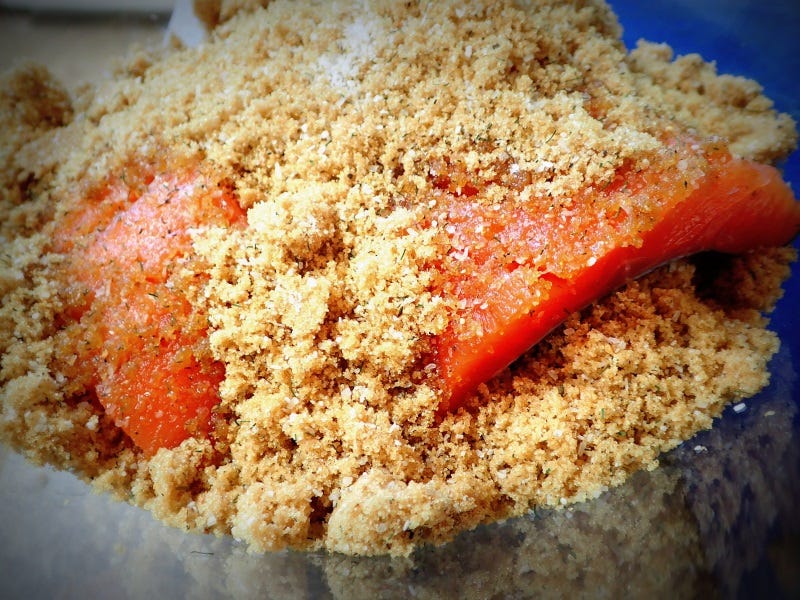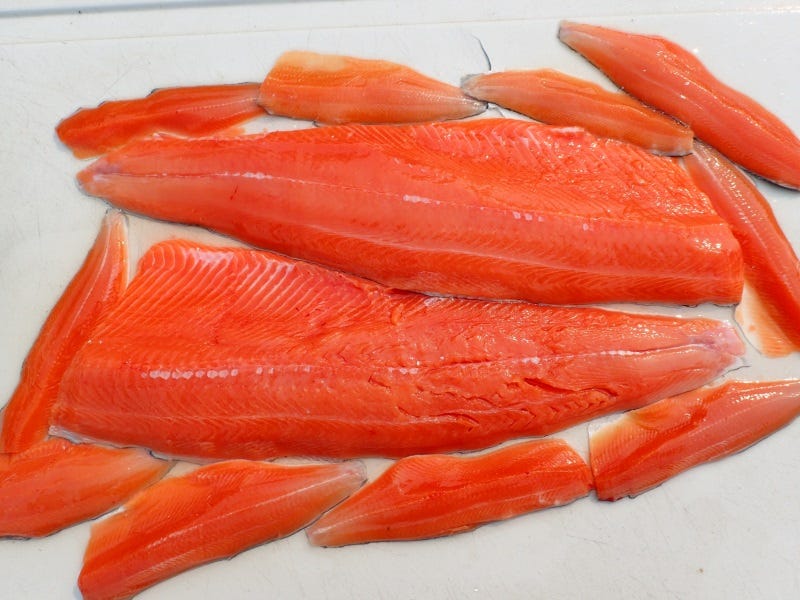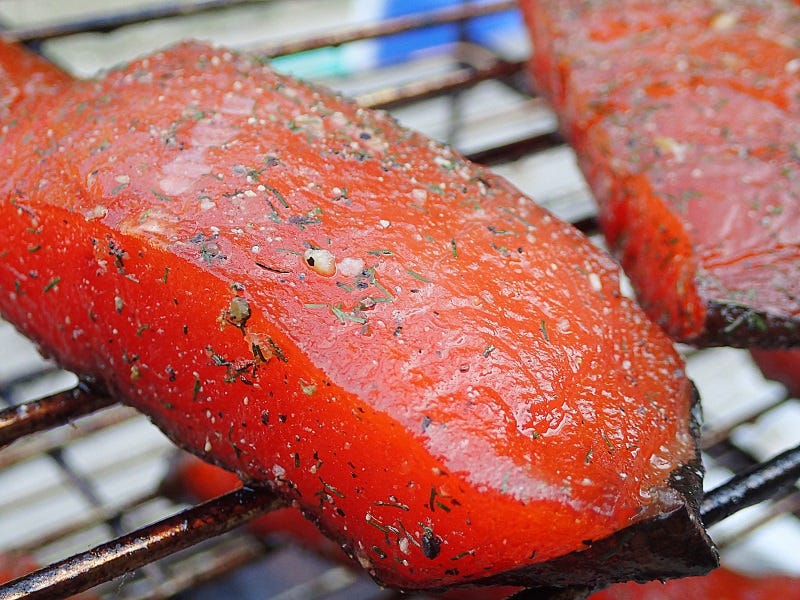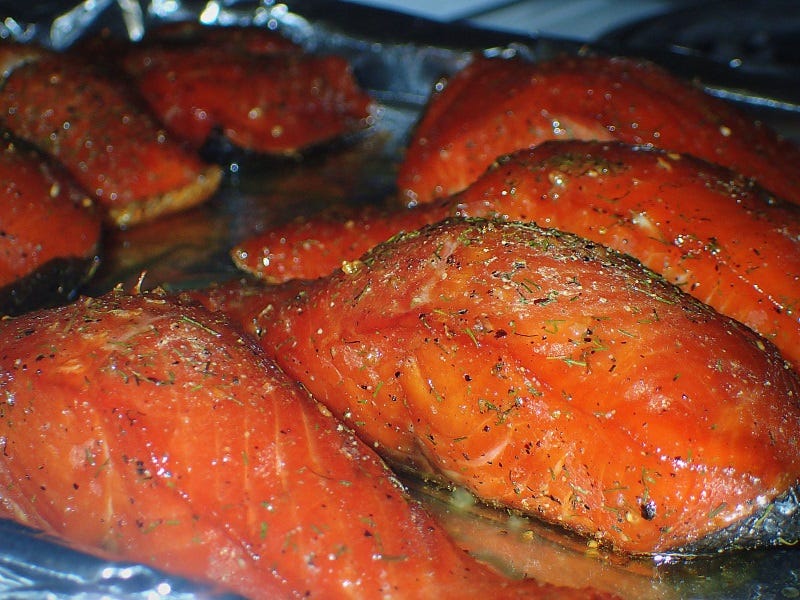How To Smoke Fish: Salmon, Kokanee, and Trout


My freezers are overflowing with the summer's bounty of salmon, kokanee, and trout. Vacuum sealed and packed away, the fillets will provide delicious meals through the long, cold winter that is just around the corner. With the leaves falling off the trees and nights getting cold, it's time to continue a long-held fall tradition of firing up the smoker.
I love smoked fish. Nothing beats fresh smoked salmon and I usually end up with a stomachache from overindulgence after the first batch of the year leaves the smoker. The rest I vacuum pack, as it provides a great snack during winter fishing trips or mixed with cream cheese, herbs, and Tobasco and served with crackers at social gatherings. Remember, the person bringing the smoked fish to any party is usually popular.
The process of smoking fish isn't all that difficult. The one thing it does take is time. The process can't be rushed, but it is worth the wait. Any oily or fat-rich fish can be smoked, including salmon, trout, kokanee, and whitefish.
Equipment to Smoke Fish
- A smoker (in this article I am using the Big Chief Smoker from Luhr Jensen)
- Wood chips, pucks, or pellets depending on which smoker you use
- A large plastic or glass container for dry brining. Do not use a metal container as the brine will strip metal atoms from the container giving your fish a distasteful "metallic" flavor. This container needs to fit in your fridge. *Hint: Clean, crisper drawers are ideal for this process.
- Cookie or pizza pan(s)
- Meat thermometer
- Paper towels
- Aluminum foil
- Cold beer (recommended, not required)
Looking for a smoker that makes it all easy? Check these out.
Six Steps to Perfect Smoked Salmon and Trout
Prepare the Fish
Fillet your fish but leave the skin on. You can remove pinbones with a pair of tweezers or hemostats. Fish smokes better if you freeze the fillets first. By freezing the fillets you break up the cell walls and allow the brine to better penetrate the meat. For thinner fillets from trout or kokanee I brine and smoke the whole fillet. For larger fish, like salmon, I cut the meat into strips 2-3" across.
Prepare the Dry Brine
The most important component to the dry-brine approach is the brown sugar to salt ratio (6:1). This recipe is virtually bulletproof as long as you get that correct. Remember, there are no liquid ingredients in dry brines. Be sure to make enough to cover all of your fillets.
Dry Brine Smoked Salmon Trout and Kokanee Recipe
1 cup non-iodized salt (Kosher, canning, or sea salt)
6 cups brown sugar
Everything below here is optional—you can add or remove spices as much as you like
2 tbsp black pepper
2 tbsp mustard powder
2 tbsp dill weed
1 tbsp ginger
1 tbsp lemon peel
1 tsp cayenne pepper
Mix thoroughly
Need the right blend of seasonings? Order online here.

Brining Your Fish
Put a thin layer of brine across the bottom of your containers. Next place a layer of fish ensuring they do not overlap. Add a layer of dry brine to cover the fish and repeat the process until all the fish is covered in brine. The brine will immediately draw the moisture out of the fish and will turn to all liquid in 8-to 10 hours. Ensure all the fillets are completely submerged.
Brining times vary, depending on the thickness of the fish and the desired level of texture you are looking for. For kokanee and trout I typically brine 12 hours, unless I want a "candied" or jerky style texture. To achieve that I brine 18 hours. For thicker salmon cuts 24 hours is my standard time; 36 hours for a candied version.

The Pellicle
Prepare your smoking racks by lightly coating with canola or olive oil to prevent the fillets from sticking. Remove the fillets from the brine and use a paper towel to wipe away any significant amounts of crystalized brine. Stack the fillets on your racks and place something below the racks to collect the brine as it drips off. Leave the racks in cool dry place for 1-to 3 hours, allowing the pellicle to form. The pellicle is a glossy layer of proteins that dry to a tackiness on the surface of the meat. Proper pellicle formation is critical as it provides the substrate to which the smoke will bind and it traps moisture in your fillets during the smoking process. If your meat is not forming a pellicle quickly enough you can place a fan in front of the racks to expedite the process. The salt in the meat will protect the meat from spoiling during this process.

Smoking
For smoking I use the Luhr Jensen Big Chief Smoker. Little more than a metal box with racks and a heat pan its simplicity pays homage to the original smokehouse, just in miniature. Next, I organize the racks concentrating the thicker fillets on the bottom racks, closest to the heat source, with progressively thinner fillets upward. After closing up the smoker I load a full pan with alder chips. I prefer alder as it produces a light smoke that doesn't totally overwhelm the flavors of the fish. If you prefer heavier smoke flavors try hickory or mesquite.
Load the pan on the heating element, plug it in, and within 30 minutes heavy smoke streams from the smoker. Monitor the smoker to ensure a consistent amount of smoke is being produced (this is where the cold beer comes in handy). Depending on ambient air temps and wind, the wood should take about 1.5 to 2 hours to burn through. After the chips have completely burned remove the pan and add another pan of wood chips. I usually finish with apple wood chips for a sweeter finish. During the switch you can rotate your racks if the fillets on the bottom are looking darker then you want them to be. Finish smoking with the second pan, and remove the racks from the smoker.
Finishing Your Smoked Fish
Preheat your oven to 350 F. Place aluminum foil on your cookie/pizza pans. Coat the foil in a non-stick spray. Remove the smoked fillets from the racks and place on the pans. At this point I usually brush a thin layer of honey, jalapeno jelly, or plum jelly onto the smoked fillets. Place in the oven until your thickest fillet measures at least a 160 F internal temperature, and the edges darken.
Depending on the thickness of the fillets this can take anywhere from 10-to 20 minutes. Monitor frequently and once you have the desired color and temperature remove from the oven.
That's it. Nothing beats fresh smoked fish, so be sure to enjoy a piece or a dozen before vacuum sealing and freezing your loot. Please remember that smoking fish doesn't make it any less susceptible to spoilage. It'll stay good for about one week in the fridge and many months vacuum sealed and frozen.
Need a smoker, temperature gauges or other supplies to get started smoking today? Check out our grilling and food preparation section or look below for some options.
